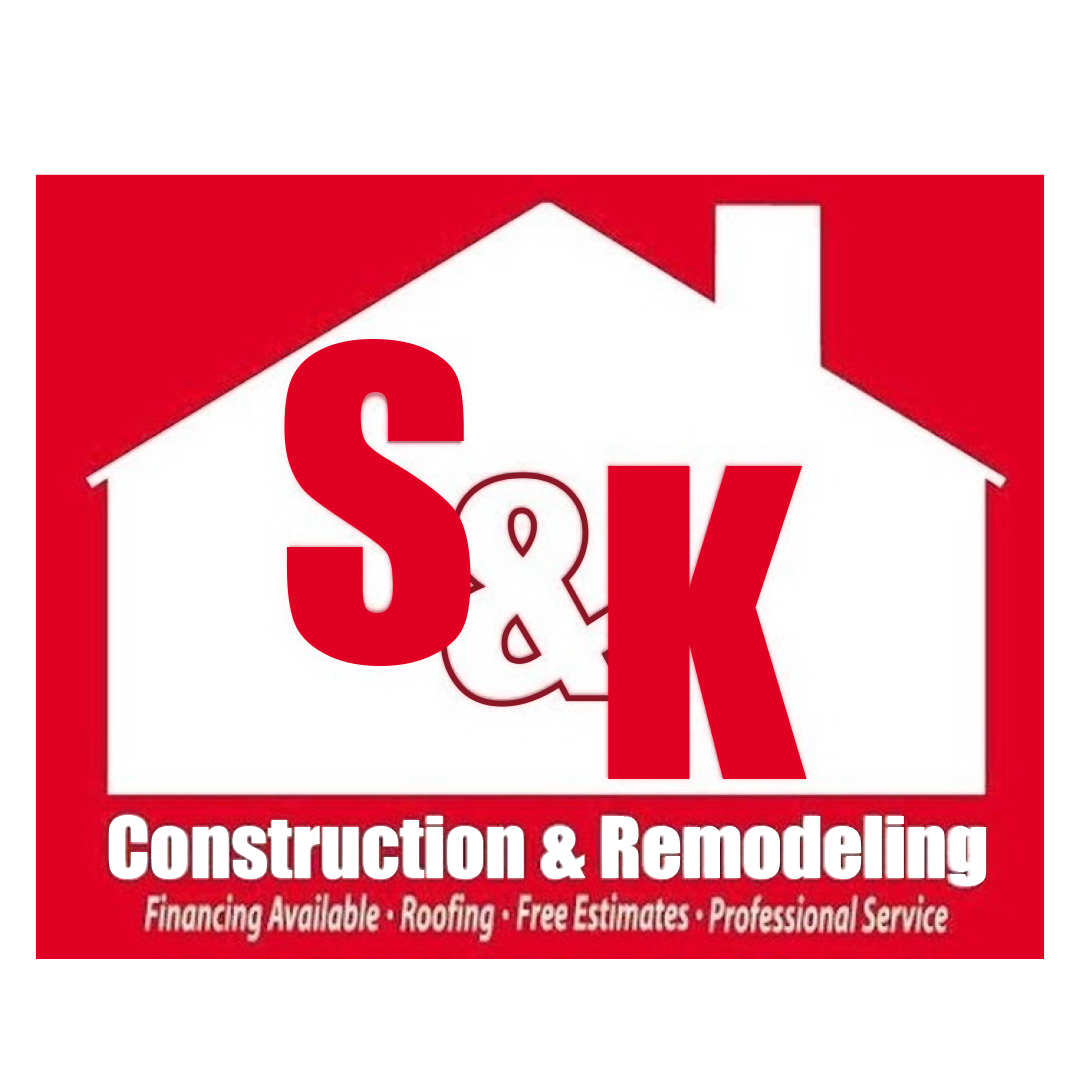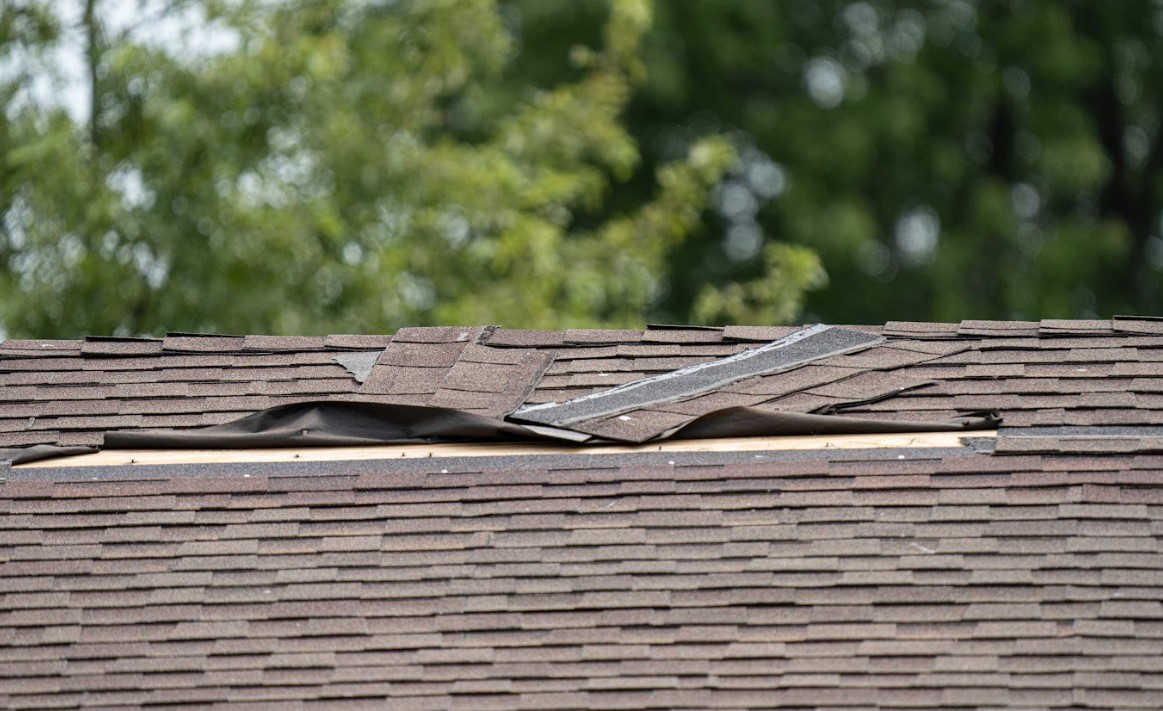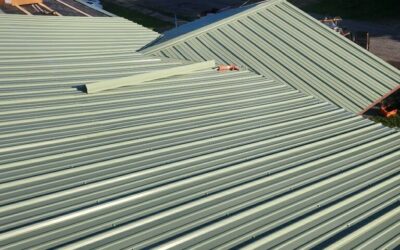After the Storm Ends, Your Roof’s Real Test Begins
In Lake County, OH, once the thunder fades and the snow settles, your roof faces its true moment of reckoning. That sudden gust, hail blast, or heavy snowfall may have left behind hidden damage you won’t see from the street — yet spotting the signs of storm damage to your roof early can save your home and your budget. Whether you’re concerned about hail damage on a roof, wind-related roof damage, or simply unsure what to check, this guide gives you clarity and direction.
What you’ll learn in this post:
- The seven most common indicators it’s time for a roof inspection
- How to perform a safe, practical check-up in Lake County
- What to ask next if you notice damage
- Why acting immediately protects your home and insurance eligibility
- How S&K Construction and Remodeling is the local partner to call
If you need expert help after a storm, S&K Construction and Remodeling can help.
What Counts as Storm Damage and Why It Matters in Lake County
Storm damage can take many forms — from missing shingles and bent flashing to punctured decking — all caused by wind, hail, snow, or debris. Here in Lake County, OH, roofs face heavy snow, lake-effect hail, strong wind gusts, and freeze-thaw cycles. These forces don’t wait—and if you don’t act quickly, your roof could give way.
When we talk about signs of storm damage to your roof, we’re not just focused on what’s visible today. We’re looking at what may follow: leaks, mold, warped decking, or even structural issues. Spotting early signs of hail damage orr wind-related roof damage helps protect your home, inside and out.
What to Know Before You Inspect Your Roof
Before you get up on a ladder or call a contractor, it’s important to prepare. Here’s what you should know before inspecting your roof:
- Stay safe. Wet or damaged roofs are dangerous. When in doubt, stay on the ground and call a professional.
- Take photos. Document the condition of your roof after the storm—especially if you’re filing an insurance claim.
- Check your coverage. Review your insurance policy and roofing material warranties to understand what’s covered.
- Know your materials. Asphalt, metal, and impact-resistant shingles show damage differently.
- Time it right. Wait until weather conditions are dry and daylight is good so you can inspect thoroughly and safely.
Seven Key Indicators of Storm Damage to Your Roof
What to Check After a Severe Weather Event
1. Shingles That Are Missing or Lifting
Shingles on the ground or flapping in the wind? You’re probably dealing with wind-related roof damage. Without a solid seal, water can find its way in fast.
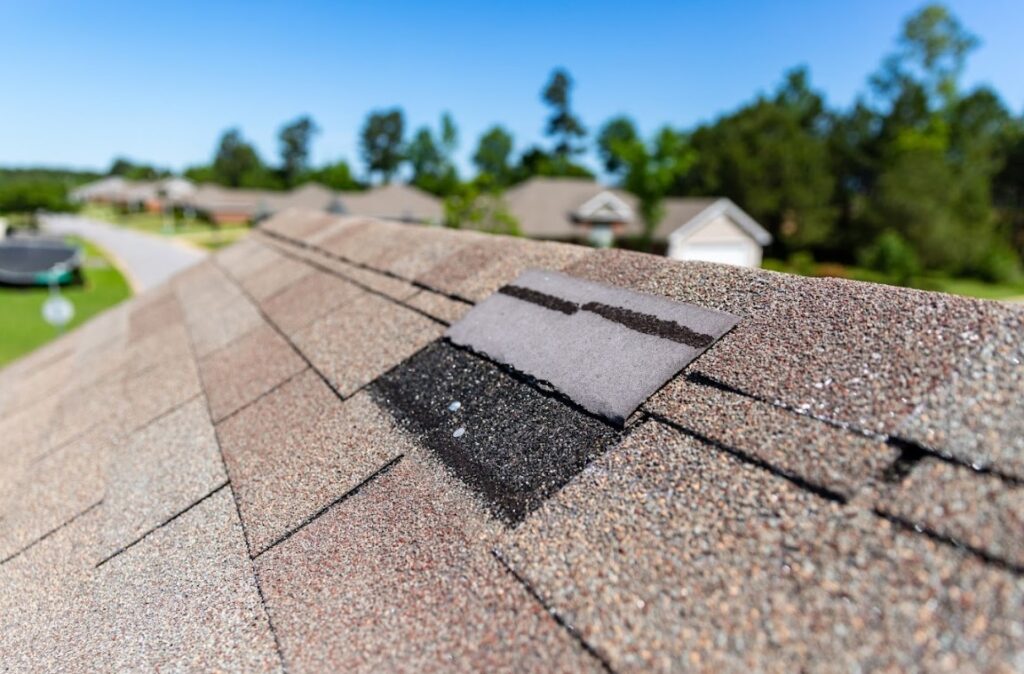
2. Dents and Bruises on Shingles (Hail Related)
Hail damage may not be immediately obvious. Look for small bruises or soft spots in shingles—signs the impact has weakened your roof’s protective layer.
3. Granules in Gutters or On the Ground
If you notice grit or granules collecting in your gutters after a storm, your shingles are likely deteriorating. This is one of the subtler but serious signs of storm damage to a roof.
4. Bent or Missing Flashing / Ridge Caps
Wind or falling debris often damage metal flashing or ridge caps—key components that keep water from seeping into seams and edges.
5. Interior Water Stains or Drips After a Storm
New stains on ceilings or attic rafters mean moisture has made it inside. This almost always ties back to undetected roof damage.
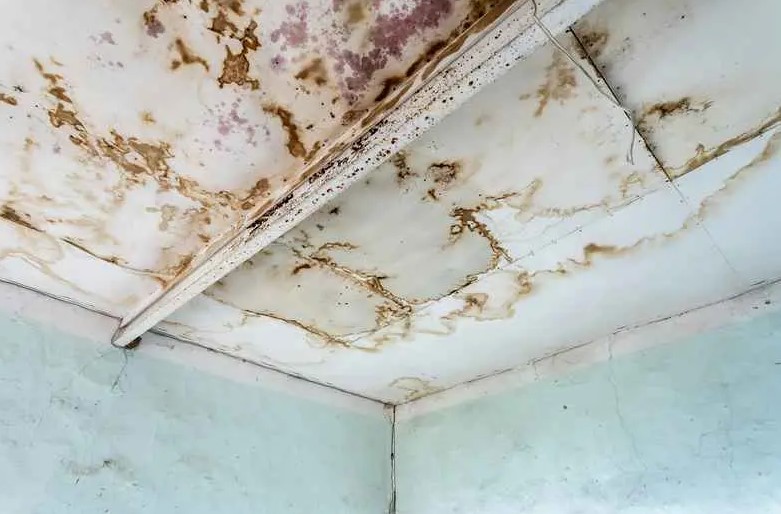
6. Tree Debris or Branch Impact Zones
Branches on your roof or in the yard might mean trouble. Even if they’ve been removed, they may have cracked or punctured roofing materials on impact.
7. Sagging Deck or Soft Spots in Attic
If your roof decking feels springy or you notice sagging areas inside your attic, it may indicate deeper structural issues caused by water intrusion.
How Materials, Warranties & Lake County Conditions Impact Damage
What your roof is made of—and how it’s been maintained—matters just as much as the storm itself.
- Material types. Standard asphalt shingles are affordable but more prone to hail damage. Impact-resistant shingles and metal roofs offer more protection but also need regular inspections.
- Warranty limitations. Many manufacturers require prompt documentation after a storm for coverage to apply.
- Regional climate risks. In Lake County, OH, winters bring ice dams, heavy snow, and fast temperature swings—all of which increase your risk of storm-related roof damage.
Pros & Cons of a Professional Post-Storm Inspection
| Pros | Cons |
| Detects hidden or delayed damage | Small upfront inspection fee (if applicable) |
| Supports insurance and warranty claims | May uncover issues requiring urgent repair |
| Prioritized repair estimates | Not all damage is covered by insurance |
At S&K Construction and Remodeling, we offer drone imaging, detailed attic inspections, full photo documentation, and next steps tailored to your home and budget.
Common Questions About Storm-Related Roof Damage in Lake County
After major storms in Northeast Ohio, we get a lot of calls from homeowners with similar concerns. Here are some of the most common questions about identifying and responding to storm damage to your roof.
How soon after a storm should I check my roof?
You should check your roof within 48 to 72 hours after a storm. This window gives you the best chance to catch early signs of damage—like missing shingles or bruised surfaces—before water intrusion becomes a bigger problem.
Can small hail really cause roof damage?
Yes, even small hail can damage your roof. Hailstones don’t need to be large to dislodge granules, dent asphalt shingles, or weaken your roof’s protective layer.
Will my insurance policy cover storm damage to my roof?
In most cases, your insurance will cover storm-related roof damage. That includes wind or hail damage, as long as you report it quickly and provide photo documentation or an inspection report from a licensed contractor.
How can I tell the difference between cosmetic and structural roof damage?
The difference between cosmetic and structural damage comes down to function. Cosmetic issues—like surface bruising—may affect how the roof looks, while structural damage involves deeper problems like broken flashing or leaks that impact performance.
Is it okay to wait until spring to inspect winter storm damage?
No, waiting until spring to inspect your roof can be risky. Freeze-thaw cycles and snow buildup can turn small issues into costly structural problems if left unaddressed through the winter months.
Does S&K Construction and Remodeling help with inspections and insurance claims?
Yes, S&K Construction and Remodeling offers free post-storm inspections and can help you through the insurance claim process. We provide photo documentation, repair estimates, and support when meeting with your adjuster.
What You’re Really Paying for With a Storm-Damage Roof Inspection
A storm has passed. Your gutters are full, the snow is melting, and everything appears quiet—but your roof might be telling a different story. Recognizing the signs of storm damage to your roof early—whether from hail, wind, or debris—can prevent thousands in repairs and protect your home long-term.
At S&K Construction and Remodeling, we combine local experience, thorough inspections, and straight answers. Whether you’re concerned about hail or wind damage to your roof, or just want peace of mind, we’re here to help.
Schedule your free storm damage inspection today. Let’s make sure your roof is ready for what’s next.
 (440) 307-2060
(440) 307-2060